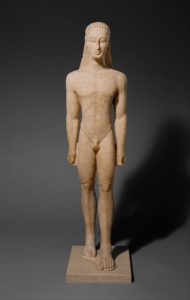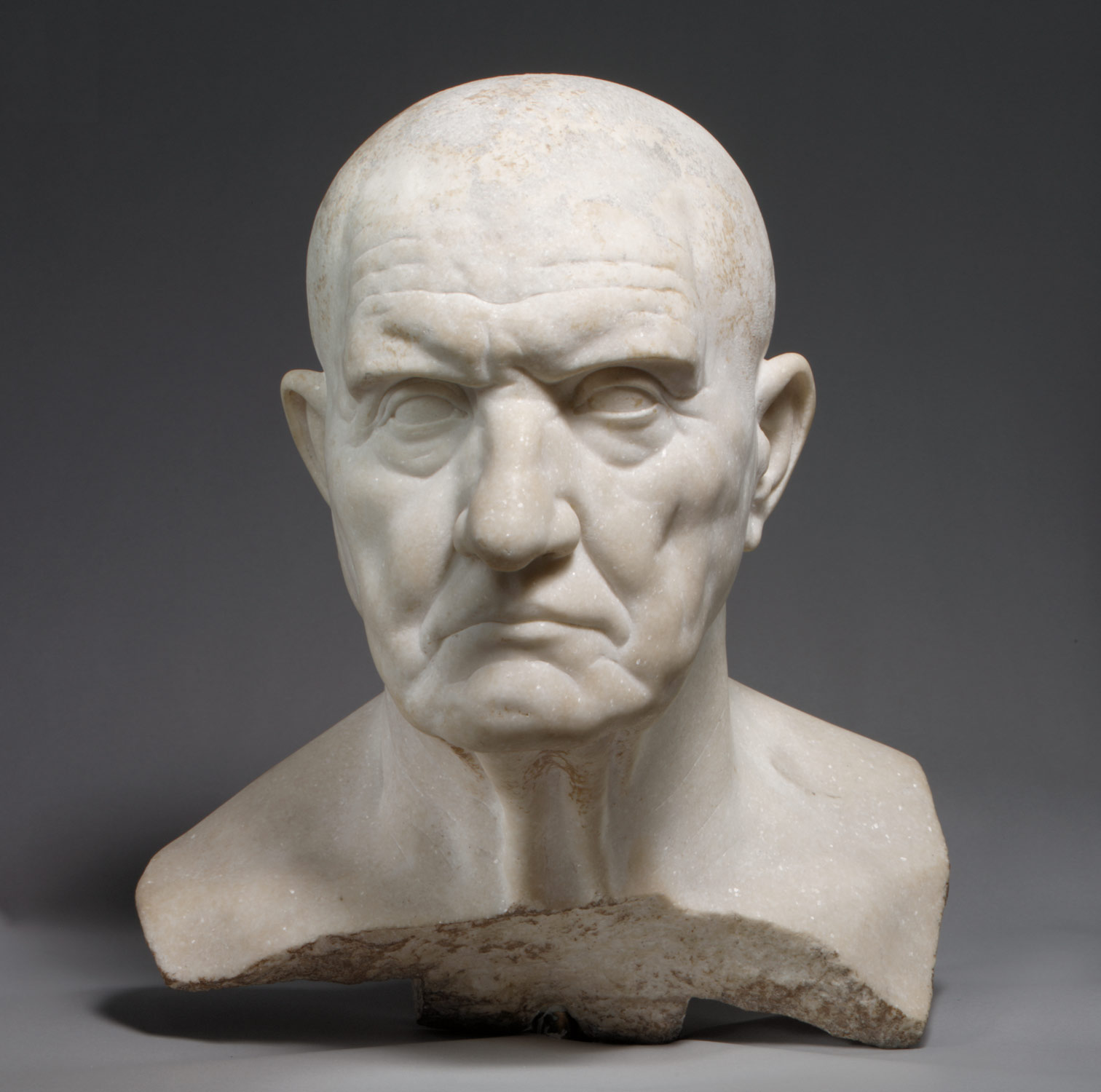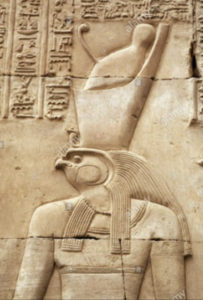Humanism is the importance of emotional and physical aspects of human nature over the spiritual and metaphysical aspects. In Greek and Roman art, humanism had a significant influence on ancient Greece and Rome. Upon observing their art, the Greek and Romans placed more emphasis on the physical human condition. For instance, the sculpture Seated Boxer (100-50 BCE), shows the boxer in a moment of vulnerability. While his posture displays a look of content resting, his actual emotions are shown in his facial expression. Despite having no eyes, the position of his head and eyebrows gives an indication of tiredness and/or tiredness. Like most Greek and Roman art, the artists’ use of somewhat exaggerated facial expressions and body postures makes viewers concentrate more on how the subject is feeling and what they might be thinking. In doing so, the focal point is the human condition. In contrast, ancient Egyptian and Mesopotamian used religion as the focal point of most of their art. The majority of their art included important deities and other supernatural subjects such as the afterlife and the divine. Artwork such as the Statue of Gudea (2150 BCE) and the Last Judgement of Hunefer showcases the topic of the metaphysical. The Statue of Gudea shows Gudea in a non-threatening and open position. Along with crown on his head, we can conclude that he has the backing on the divine and leads through listening and understanding. The Last Judegement of Hunefer displays Hunefer’s judgement. The illustrations of deities associated with death and the afterlife and his interactions with them shows that the subject of afterlife is illustrated in this scroll. From these two ancient artworks, ancient Egypt and Mesopotamia believed religious and spiritual situations were more important in their everyday lives compared to ancient Greece and Rome who held humanism as important to their everyday lives.
Tag: Blog Post 7: Humanism
Humanism
Humanism is a cultural and intellectual movement of the Renaissance that emphasized human potential to attain excellence and promoted direct study of the literature, art, and civilization of classical Greece and Rome.



Greek humanism is the beauty of the human form and essence. It puts the human experience at the center of events. In this statue of the Doryphoros is shows an adult male body with a muscular somewhat bulky body with a blocked shaped torso. The positioning of his feet are in a stance where one leg takes all the weight of the body and the other is merely a support. In this position he is standing in a relaxed state in which he can look around him easily without breaking form. On the other hand Kouros is a teenager or young adult standing in a symmetrical pose. He has a defined body which seems more realistic than Doryphoros and a calm posture.
In Roman humanism statues were more symbolic and focused on singular characteristics likes the face or body. In the Marble bust of a man sculpture it shows an elder aged man with a serious look on his face. Usually in Roman sculptures they depict signs of aging and reflecting on the character of the individual where as in Greek sculpture it shows the youth and strength.
Humanism in Greek and Roman Art
Humanism is a philosophical system that highlights the importance and value of human beings rather than divine/supernatural matters. It has various characteristics. First it sought rational thinking, to look for explanations in the natural world. Thus encouraging the use of critical thinking leaving space for new speculations. It also placed human beings in the center of moral and social concerns. In terms of art it focused on the beauty of humans mainly man. It did this through the use of nudity in art.
Greek and Roman art illustrates a major difference in art as opposed to Egyptian art. Humanism if greatly found in Greek and Roman art through the nude sculptures of young man and the occasional nude of Aphrodite all showing the real beauty in human anatomy. While Egyptian art is greatly God centered often showing human bodies with animal features. Placing emphasis on divine power rather human acts.
Riace Warrior A. 460 – 450 BCE

Horus

As seen in the images above there a big differences in the sculpture of a Race warrior there are real human features like muscle, hair, body structure. While in the image of Horus it a God with both human and animal features. A falcons head and human body. However the body is very lean no real muscles can be seen. There is a greater focus on the divine being rather than its human features.


